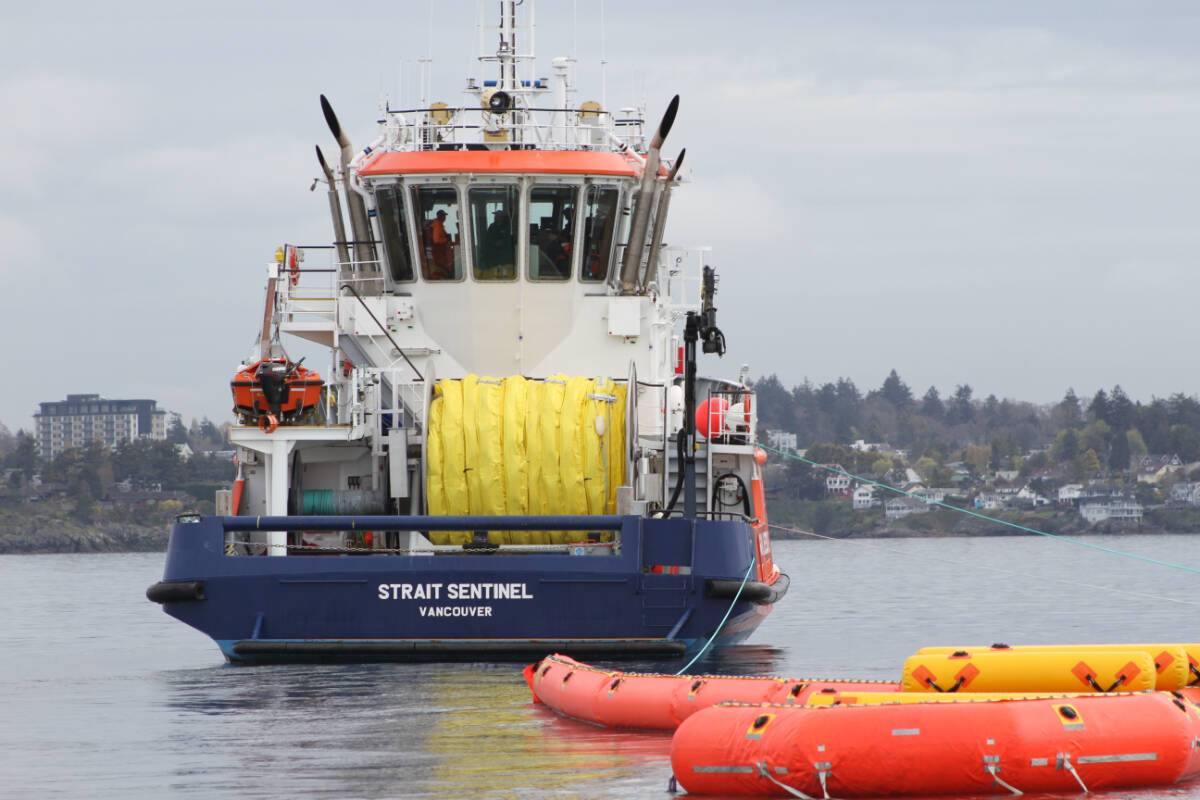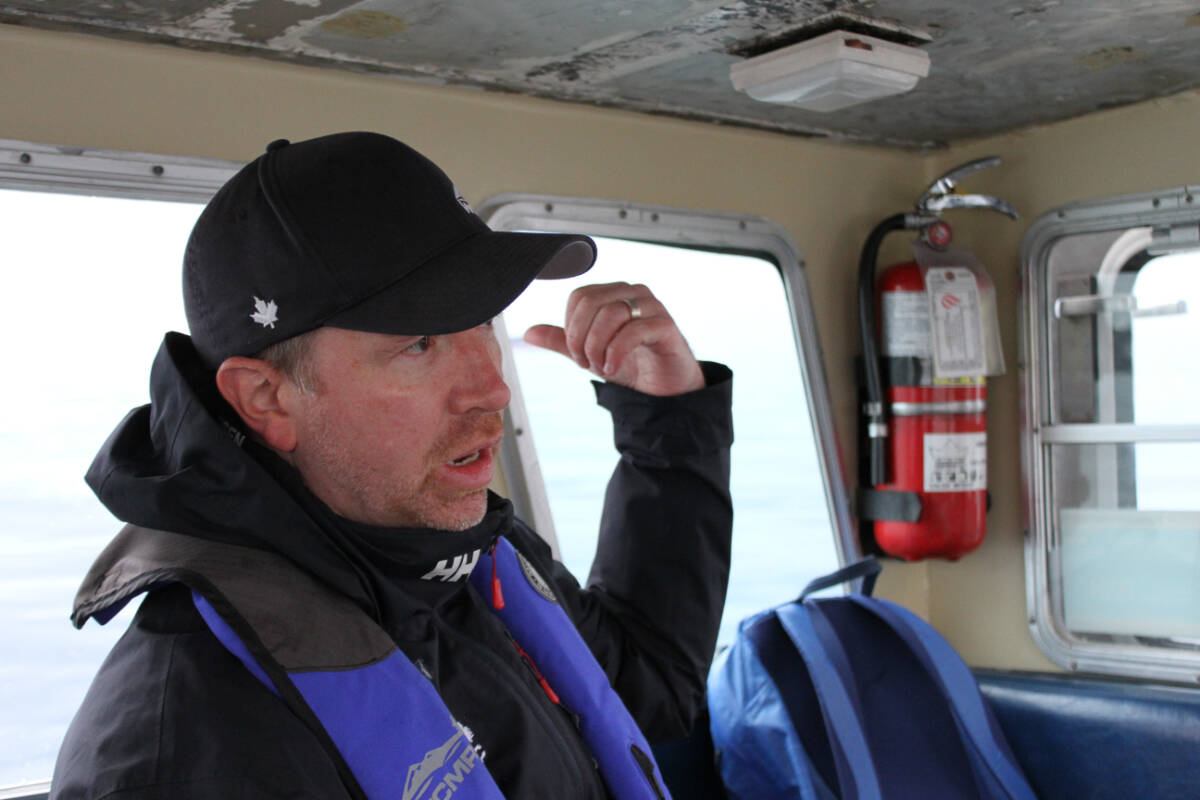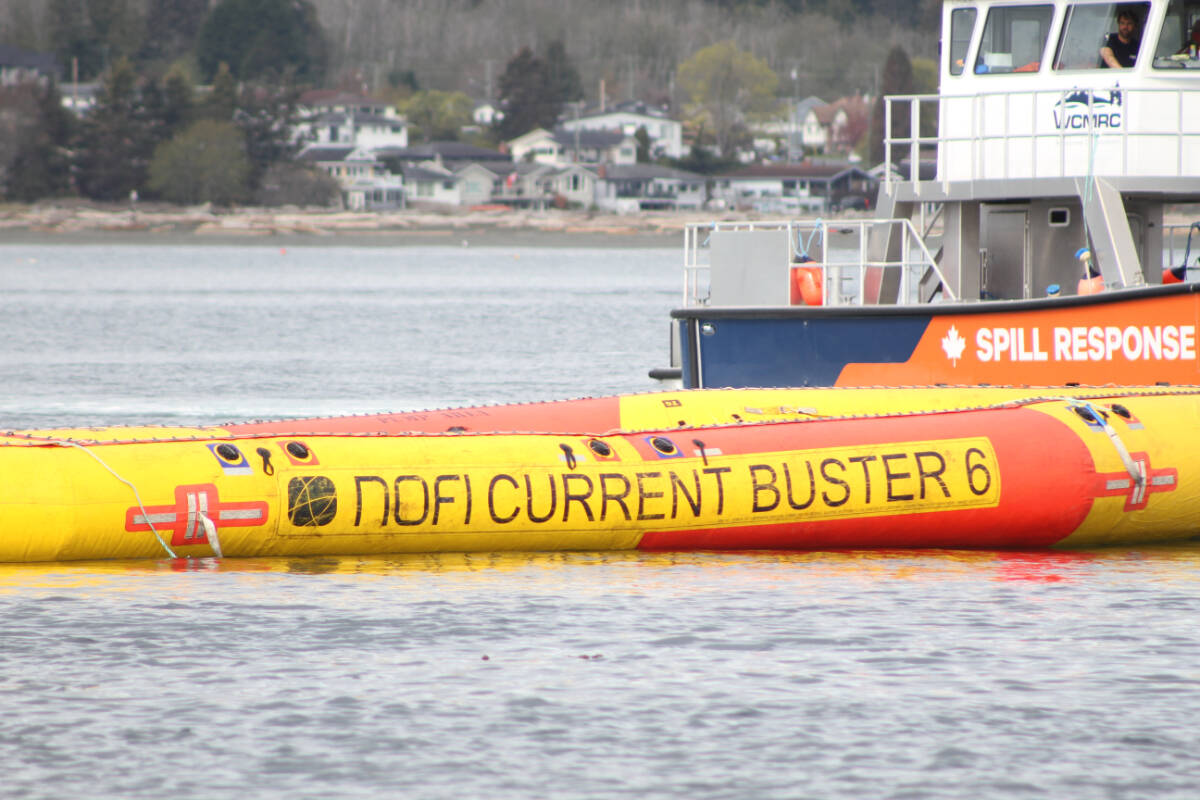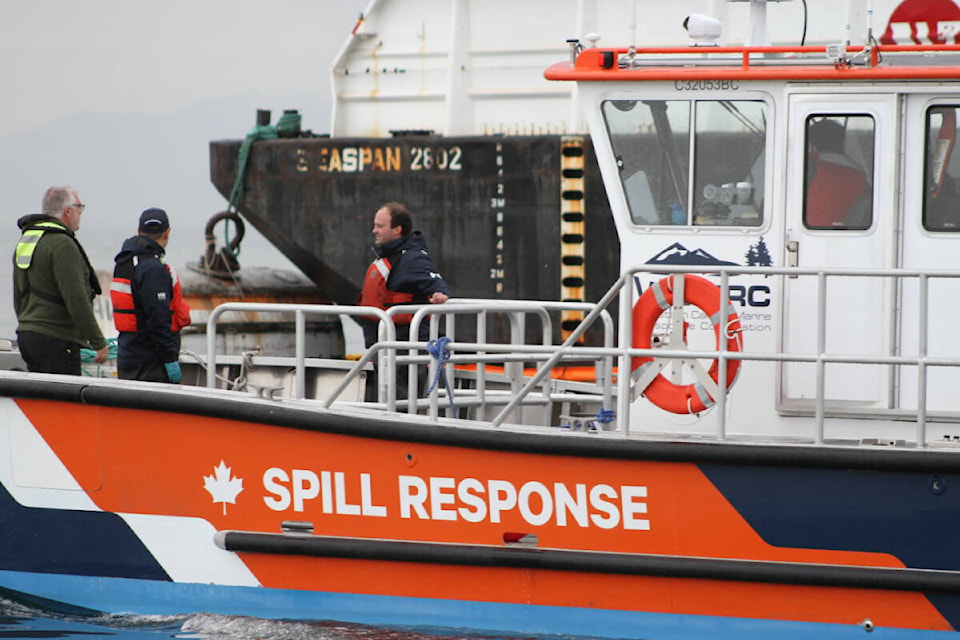All hands were on deck as Canada’s only oil spill response organization on the West Coast simulated a spill of 2,500 tonnes of heavy bunker fuel near the busy shipping lanes just off southern Vancouver Island.
On Wednesday (April 26), crews with the Western Canada Marine Response Corporation (WCMRC) took to the waters outside Esquimalt Harbour to conduct the exercise involving 12 vessels from all six of its bases along the B.C. South Coast.
The exercise, held every two years as part of Transport Canada’s certification program for spill response organizations, also involved nearly 70 personnel on the water and more than 100 in the command post set up back on land.

Although WCMRC communications manager Michael Lowrey said there has never been a 2,500-tonne spill in Canadian waters in the history of the country, he said the exercise provides vital experience for marine response crews.
“We don’t have a chance to use this equipment very often. The majority of spills that we respond to are much smaller in scale,” he said. “Just like any response organization – when you don’t have these big spills to test yourself on – you do need opportunities to exercise and train. We have six different bases within the area, so it’s a great chance for our folks from the different bases to come and work together on a large-scale operation.”
In B.C., a spill response typically includes representatives from the polluter, Canadian Coast Guard, affected First Nations and municipalities, the B.C. Ministry of Environment and Climate Change Strategy, Transport Canada, the Department of Fisheries and Oceans, Environment and Climate Change Canada and the WCMRC.

When a spill does occur, a process is set in motion to manage the response operation. This includes notification of first responders, resource mobilization and deployment, in addition to ongoing response management.
As a cleanup operation unfolds, different tactics may be employed to mitigate the impacts of the spill on the surrounding marine environment. These could include mechanical recovery, shoreline protection and the use of dispersants, according to the WCMRC.
Shoreline protection measures include removing shoreline debris before the oil washes ashore, deflecting oil away from the shore with the use of booms or other physical barriers, and trapping or collecting oil at the shoreline or on the seabed.
“We’ve identified areas along the coast that are particularly sensitive to a spill – that could be an environmental sensitivity, like an eel grass bed or salmon migration route or cultural site, like a clam garden or First Nation burial site,” said Lowrey.
He said the WCMRC has identified and mapped about 700 of such locations for the shipping lanes that run along the B.C. South Coast.
The geographic area of response covers all 27,000 kilometres of Western Canada’s coastline, extending to the 200 nautical mile limit.
The last oil spill attended by the WCMRC occurred in January this year when a container ship – MV Europe – spilled between 60 and 100 litres of fuel in Vancouver’s English Bay.

ALSO READ: Protected areas, fishing bans to help B.C.’s threatened southern resident orcas
Do you have a story tip? Email: austin.westphal@saanichnews.com. Follow us on Twitter and Instagram, and like us on Facebook.



